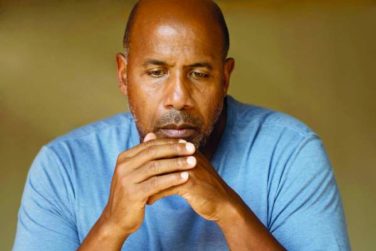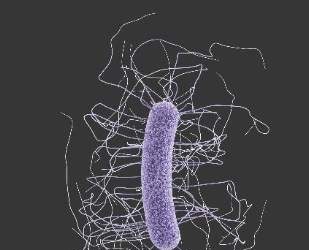AT ATA 2017
VICTORIA, B.C. (FRONTLINE MEDICAL NEWS) – Adding a nonsteroidal immunosuppressant to steroid therapy improves control of active, moderate-to-severe Graves’ orbitopathy, according to findings from a randomized controlled trial reported at the annual meeting of the American Thyroid Association.
Relative to counterparts given pulsed intravenous methylprednisolone alone, patients also given oral mycophenolate were twice as likely to achieve reduction of their ophthalmic signs and symptoms, first author George J. Kahaly, MD, PhD, reported in a session on behalf of the European Group on Graves’ Orbitopathy (EUGOGO). And the combination was generally safe and well tolerated.
“Since there is a clear advantage of combination treatment in response rate, in the absence of contraindication to mycophenolate, patients with active and severe orbitopathy may be considered for combination treatment,” he proposed.
A session attendee noted that a similar recent study from China suggests that mycophenolate monotherapy achieves a very high remission rate in this patient population (Clin Endocrinol (Oxf). 2017;86[2]:247-55). “Why don’t we just go for [mycophenolate] alone? Why keep pushing steroids?” he asked.
Methodology of that study was less rigorous, maintained Dr. Kahaly, who is professor of medicine and endocrinology/metabolism, chief physician of the endocrine outpatient clinic, and director of the thyroid research lab at Gutenberg University Medical Center in Mainz, Germany.
“I would say mycophenolate alone is not a powerful enough treatment to observe a response rate of 70%, 80%, 90%,” he stated. “You need more time. This is a lymphocyte-inhibiting agent, so you need the acute effect of the intravenous steroids at the beginning.”
Session cochair Angela M. Leung, MD, assistant professor of medicine at the University of California, Los Angeles, and an endocrinologist at both UCLA and the VA Greater Los Angeles Healthcare System, commented, “This is an intriguing study with very promising data from an active group of investigators.”
At the same time, benefit of add-on mycophenolate remains uncertain, in her opinion. “Clearly, more studies, perhaps longer-duration ones, are needed to assess the true effect and clinical efficacy,” she said.
Introducing the EUGOGO trial, Dr. Kahaly noted that European guidelines recommend intravenous methylprednisolone as first-line therapy for Graves’ orbitopathy that is moderate to severe or sight threatening ( Eur Thyroid J. 2016;5:9-26 ). Some patients, however, do not achieve response on this therapy, and others who do achieve response then go on to experience relapse, underscoring the need for better therapies.
The combination the investigators selected pairs the anti-inflammatory activity of methylprednisolone with the antiproliferative activity of mycophenolate (CellCept), which is mainly used in the transplantation field.
The trial, funded in part by Novartis, was open to patients with Graves’ disease who had been euthyroid for at least 2 months but had untreated, active, moderate-to-severe orbitopathy with involvement of soft tissues and eye muscles. Those with optic neuropathy were excluded.
Patients were randomized to 12 weeks of once-weekly intravenous methylprednisolone either alone or with the addition of 24 weeks of twice-daily oral mycophenolate initiated at the same time.
Blinded observers assessed patients for orbitopathy response, defined as improvement in two or more of six outcome measures (eyelid swelling, clinical activity score, proptosis, lid width, diplopia, and motility) in at least one eye, without deterioration in any of the same measures in either eye.
Results showed that the 24-week rate of response was 71% with methylprednisolone plus mycophenolate and 53% with methylprednisolone alone (odds ratio, 2.16; P = .026).
Dr. Kahaly acknowledged that the rate in the monotherapy group was lower than that in some in past studies and proposed this was due to both a tightening of response criteria and more conservative steroid dosing in recent years.
Benefit was similar across patient subgroups stratified by sex, smoking history, clinical activity score, duration of orbitopathy, and level of antibodies to the thyroid-stimulating hormone receptor.
The group given combination therapy also had a lower 36-week relapse rate, although this difference was not significant (4% vs. 8%; odds ratio, 0.65; P = .613). Quality-of-life scores improved in both the monotherapy group (P = .009) and the combination therapy group (P = .002).
The difference between groups in extent of proptosis was just 1 mm. “This is not enough,” he asserted, noting that teprotumumab, an investigational antibody that inhibits insulin-like growth factor I receptor, was recently found to decrease proptosis in this population by 2.7 mm ( N Engl J Med. 2017;376:1748-61 ). “This is the only drug that has led to a significant decrease of proptosis,” he noted.
“The drugs were well tolerated, and the treatment went smoothly. We didn’t have one single dropout because of drug side effects,” Dr. Kahaly reported.
The incidence of drug-related side effects was 20% with methylprednisolone and 25% with methylprednisolone plus mycophenolate, a nonsignificant difference. In both groups, most side effects were rated as mild or moderate.
Trial limitations included the lack of a placebo control, short duration of follow-up, and missing information about subsequent surgical procedures, such as orbital decompression and squint and lid surgery, acknowledged Dr. Kahaly, who disclosed that he had no relevant conflicts of interest.






